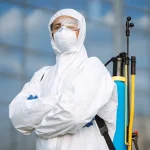Navigating LED Lighting Solutions: Insights into Wholesale Strip Lights and Module Suppliers
Introduction to LED Lighting Solutions
Lighting today is more than just functionality; it’s part of how environments are designed and experienced. From architectural highlights to retail displays, LED technology has transformed how we illuminate spaces. With energy efficiency and versatility driving its rise, the need to choose the right LED products and more importantly, the right suppliers has never been more critical.
Understanding LED Strip Lights for Projects
LED strip lights have become a go-to choice in both creative and functional lighting applications. Their ability to bend, shape, and integrate into architectural elements makes them ideal for everything from under-cabinet lighting to outlining commercial signage. For large-scale use, buying in bulk is often the most cost-effective route.
Choosing quality strip lights, however, isn’t just about cost it’s also about performance. The best options often feature higher CRI values, stable voltage, and durable backing. Lighting designers and electrical contractors rely on consistent output and color fidelity to maintain project standards.
Why Wholesale LED Strip Lights Make Sense
In medium to large installations, sourcing wholesale led strip lights can significantly reduce cost per unit while keeping quality intact. It’s also an efficient way to ensure uniformity across a project. When products come from a single, reliable batch, there’s less variation in color tone and brightness critical for commercial or retail environments where visual consistency matters.
Wholesalers that support customization, detailed specs, and responsive logistics provide more than just materials they contribute to the success of the project timeline and execution.
Evaluating LED Module Suppliers
Unlike strip lights, LED modules are built for precision. Often used in signage, displays, and channel letters, these modules are engineered to focus light exactly where it’s needed. Choosing the right led module suppliers involves looking beyond surface specs. Important considerations include the quality of the chip, thermal performance, and waterproofing especially for outdoor or high-exposure environments.
Good suppliers will also offer installation guidance, testing reports, and product variation suited to different layout needs. It’s about more than just hardware support and reliability also matter.
Tailoring LEDs to Project Specifications
LED lighting isn’t one-size-fits-all. From color temperature to lumen output, being able to select specific product traits is essential. Some applications demand high brightness and a cool tone, while others require a warm, ambient effect. A solid supplier offers flexibility in choosing PCB thickness, input voltage, or optical lenses for modules.
Projects with unique shapes or installation challenges benefit from modular designs that adapt easily to space constraints. The ability to fine-tune product specs often results in better performance and lower energy consumption.
Product Reliability and Compliance Standards
LEDs may look the same on the surface, but performance is defined by what happens over time. That’s why product certifications like CE, RoHS, and UL matter. They indicate a baseline of safety, efficiency, and manufacturing standards.
Top-tier manufacturers invest in more than just mass production they conduct ongoing quality assurance testing. Photometric validation, stress testing, and long-term reliability checks help ensure the lights maintain brightness, color stability, and safety even after thousands of hours in use.
Global Sourcing and Distribution Efficiency
Sourcing LED products globally has become the norm, especially for bulk orders. But with international supply comes logistical challenges. Shipping timelines, import taxes, and customs clearance can all impact delivery.
Reliable suppliers often have regional warehouses or partner with efficient logistics firms to streamline the process. Fast turnaround and proactive support mean smoother installs and fewer project delays, especially when deadlines are tight.
Conclusion
LED technology has redefined lighting across industries. Whether it’s flexible strip lights enhancing interior design or modular units illuminating signage, the right components and supplier partnerships are key to any successful installation.
Understanding product specs, sourcing methods, and customization options allows contractors, designers, and resellers to make more confident decisions ensuring every project benefits from the full potential of LED lighting.

















